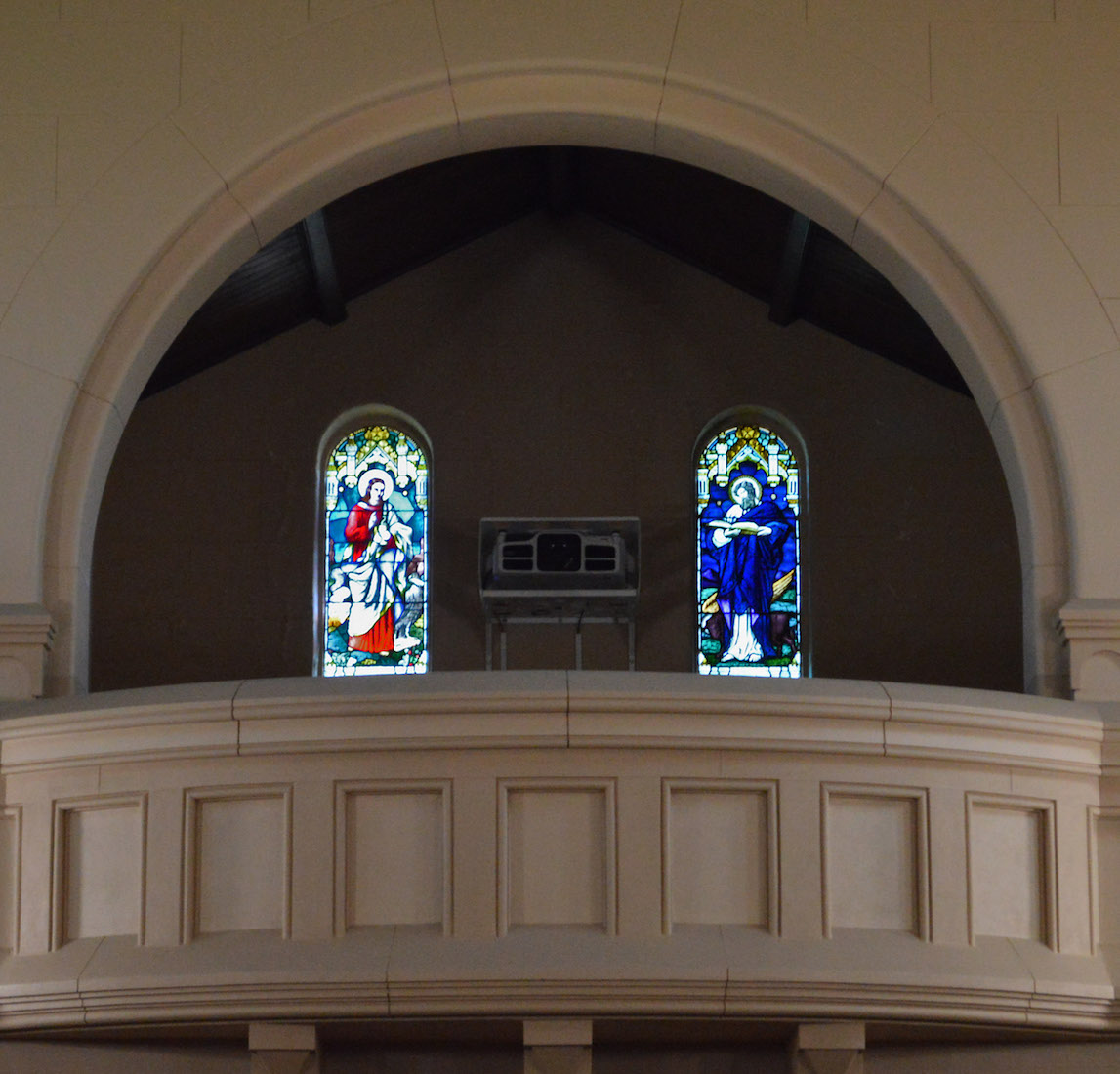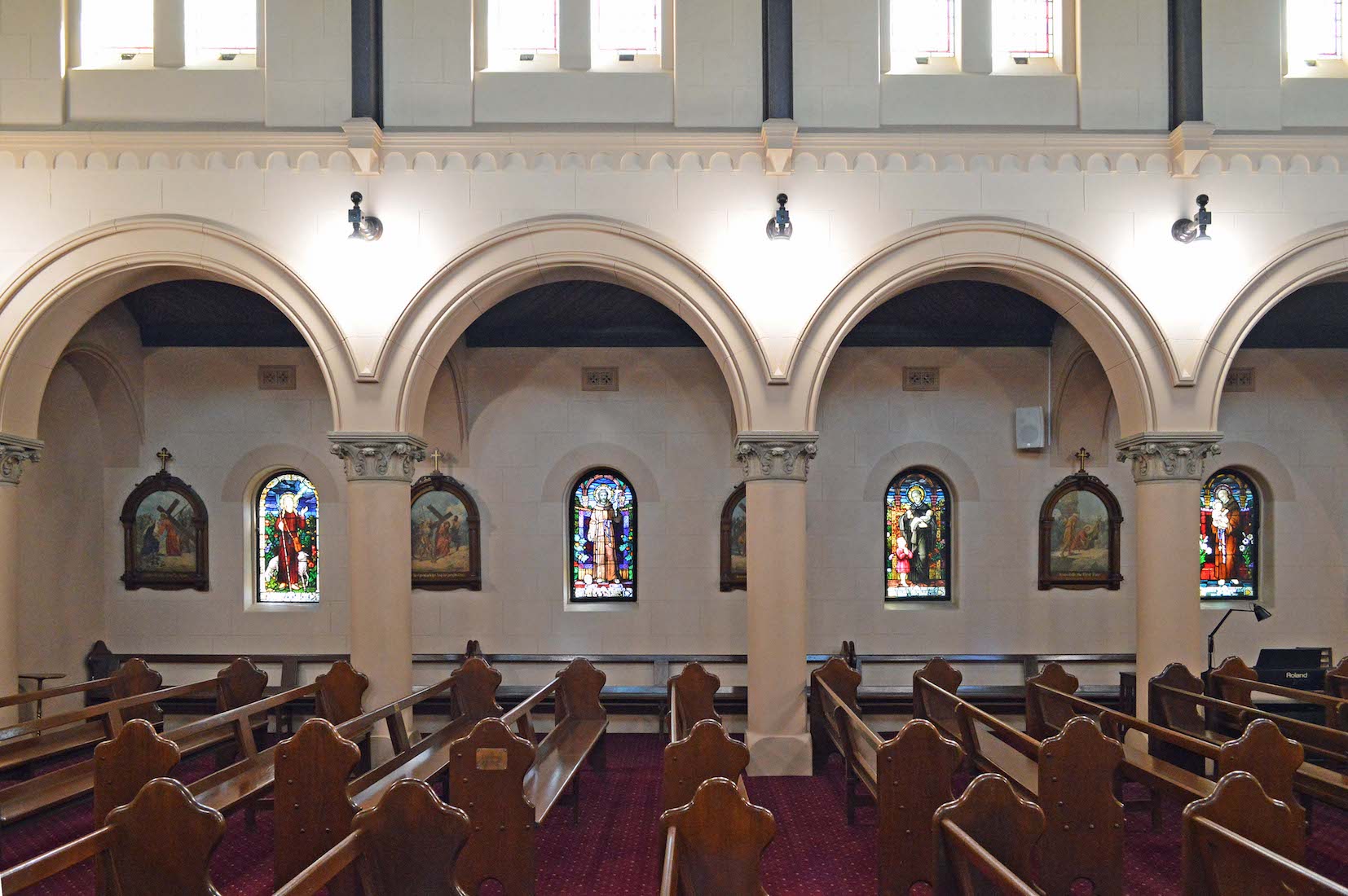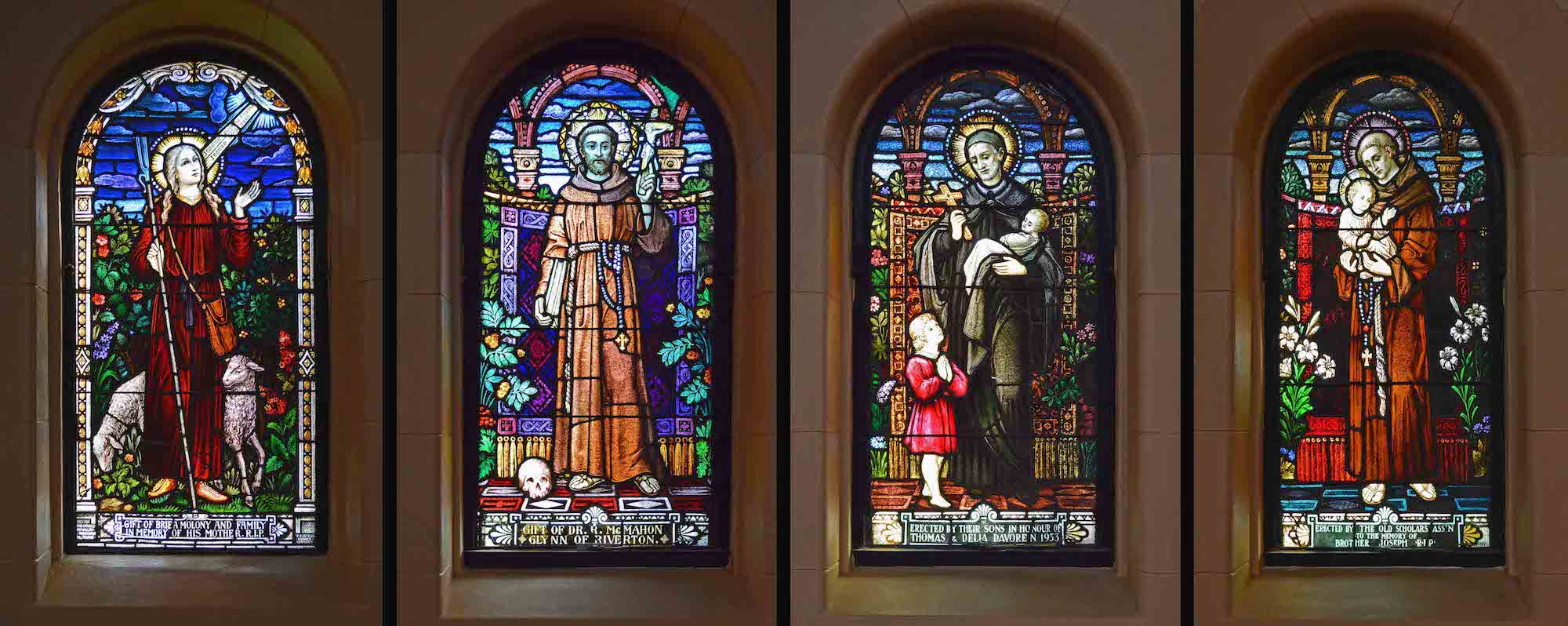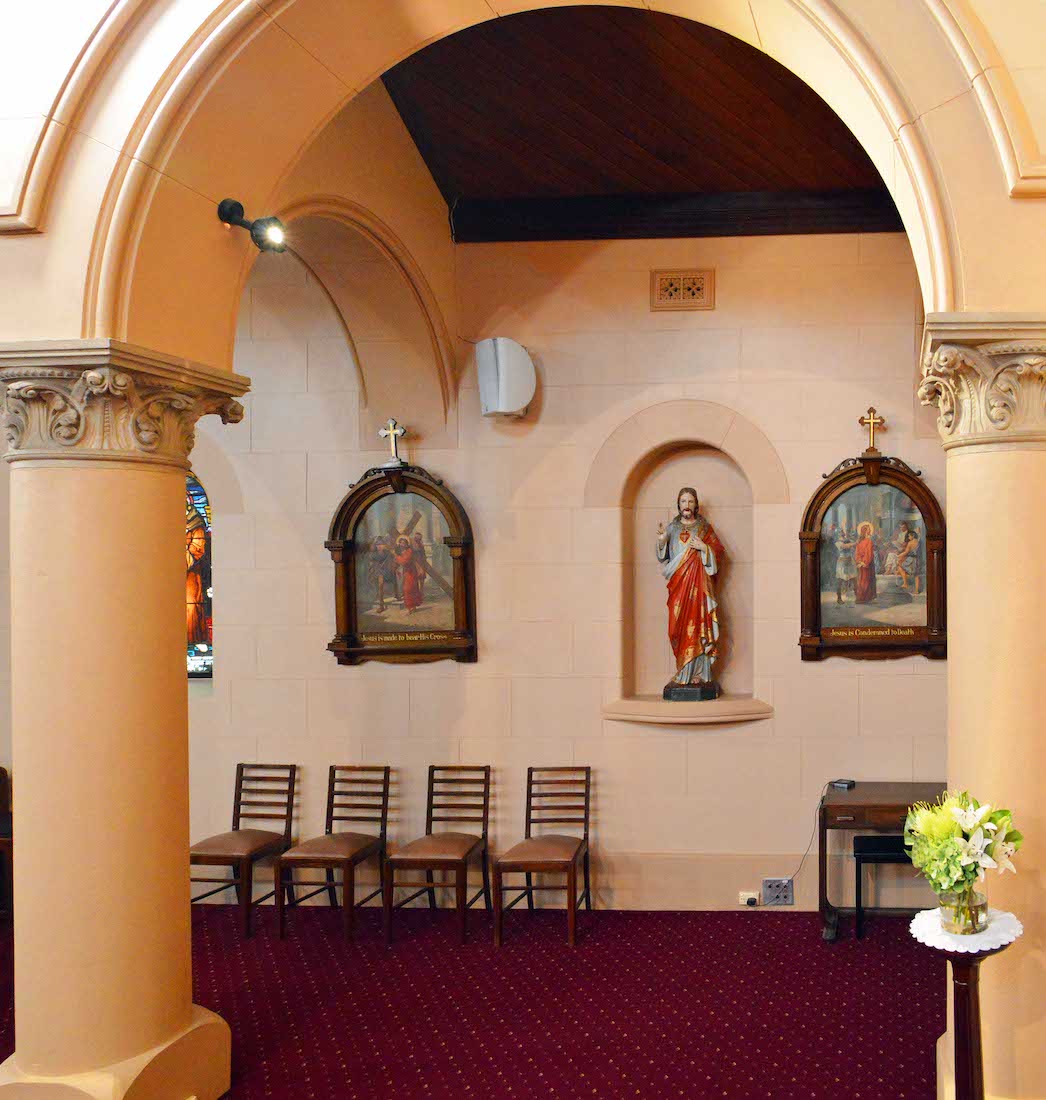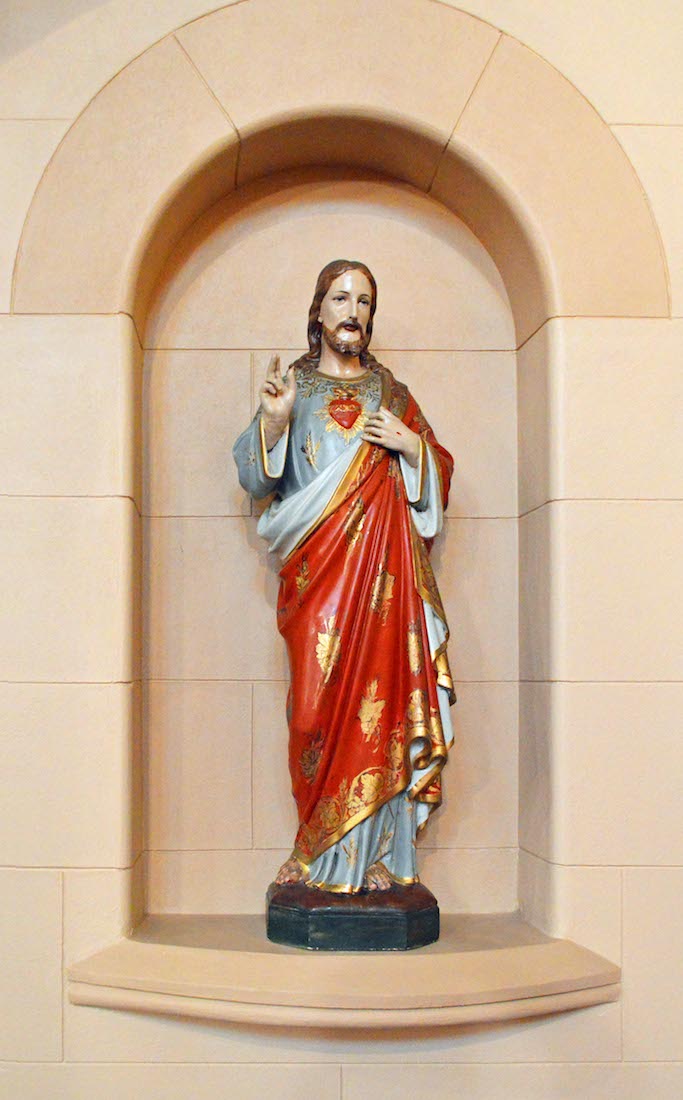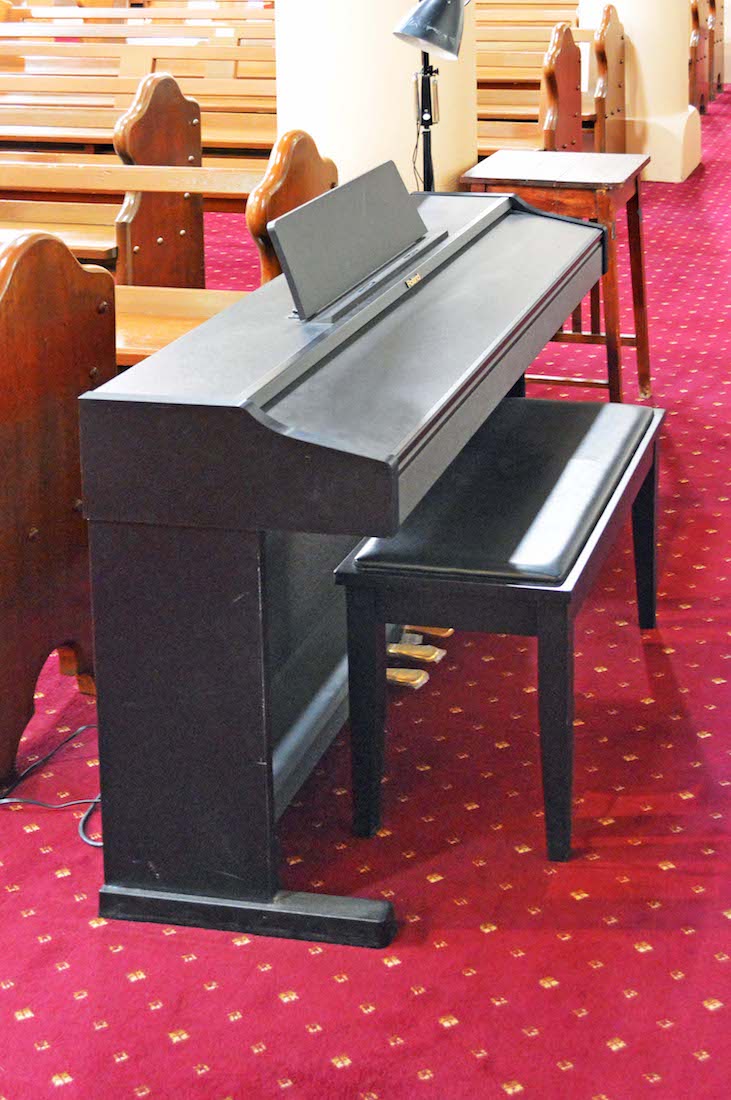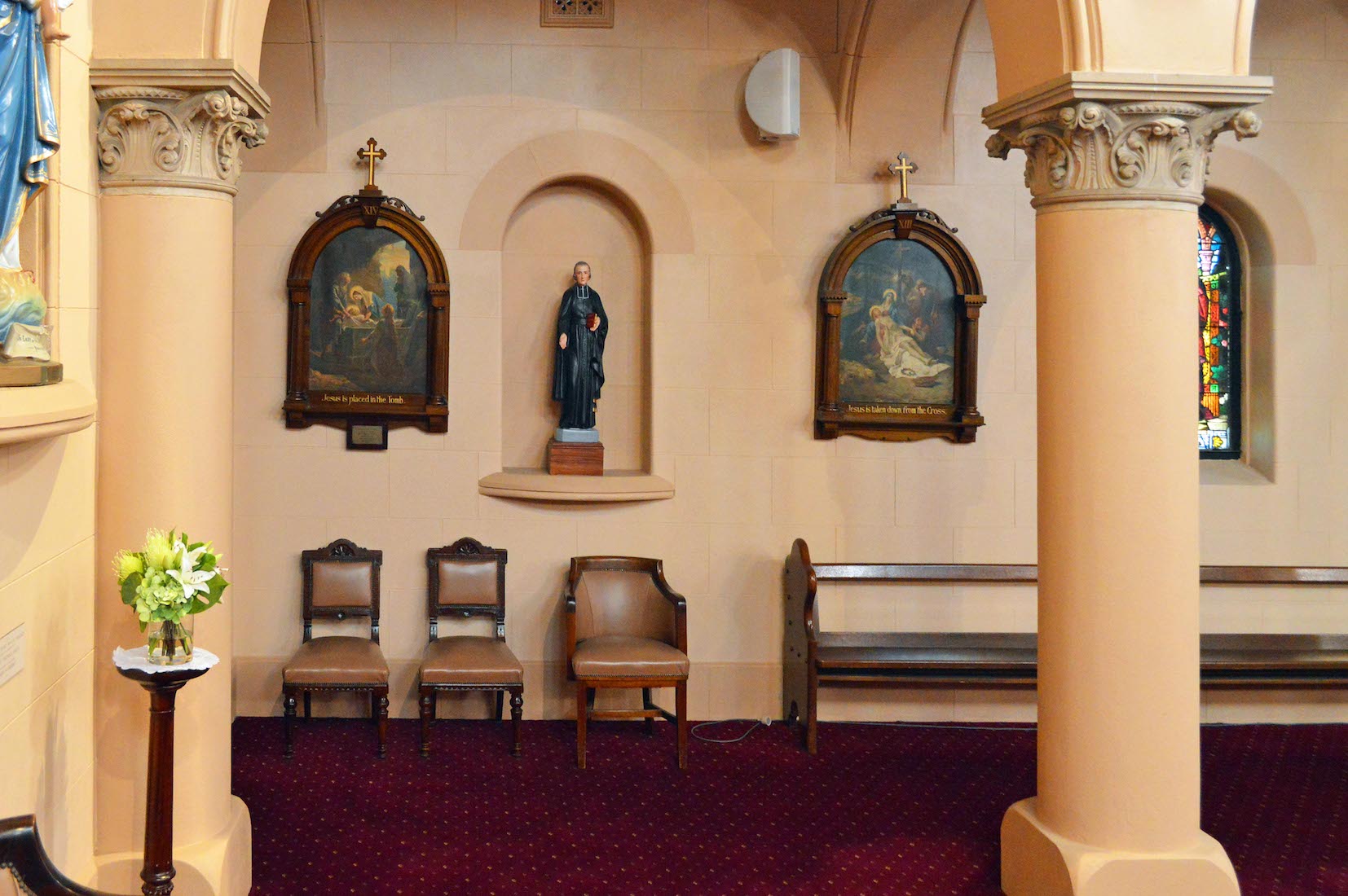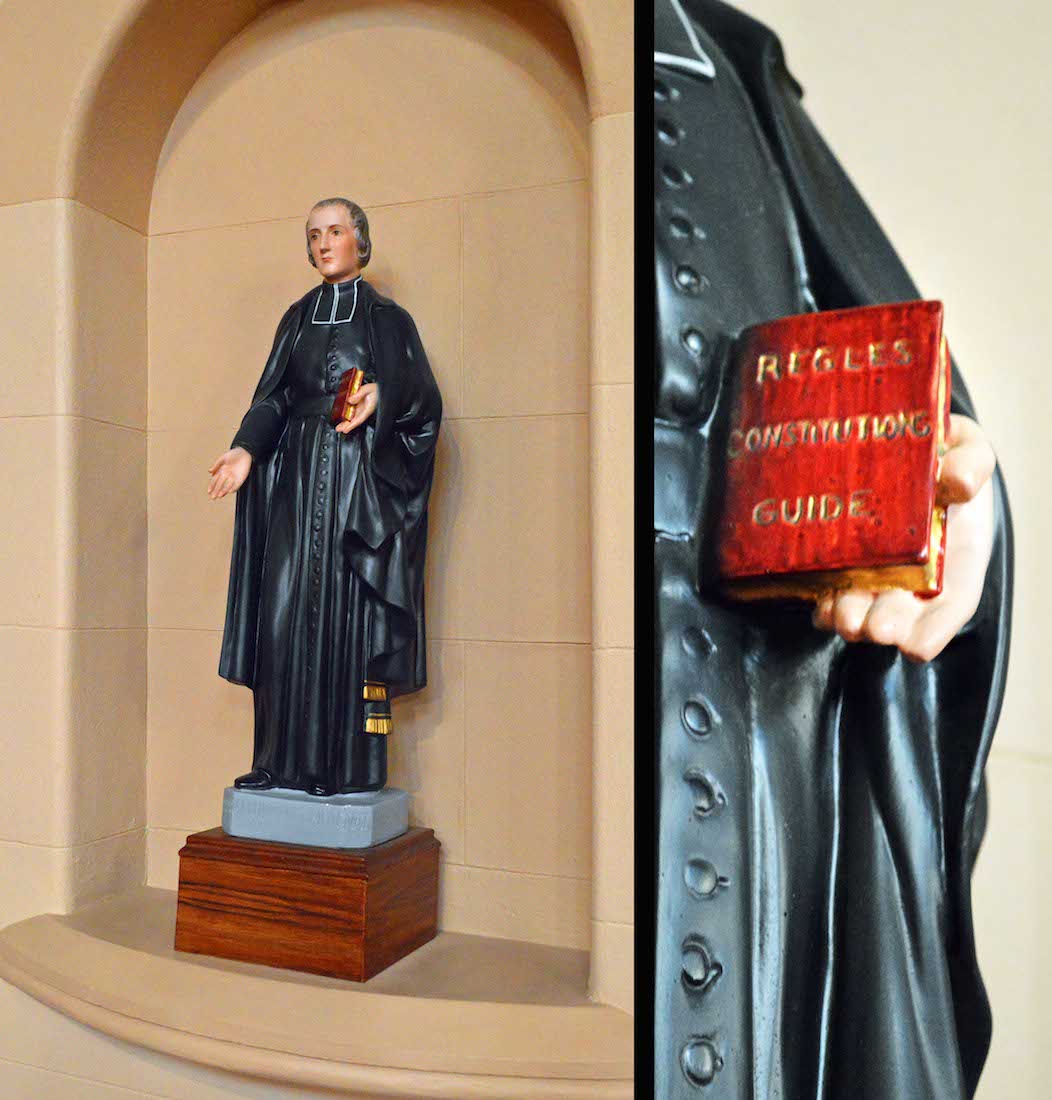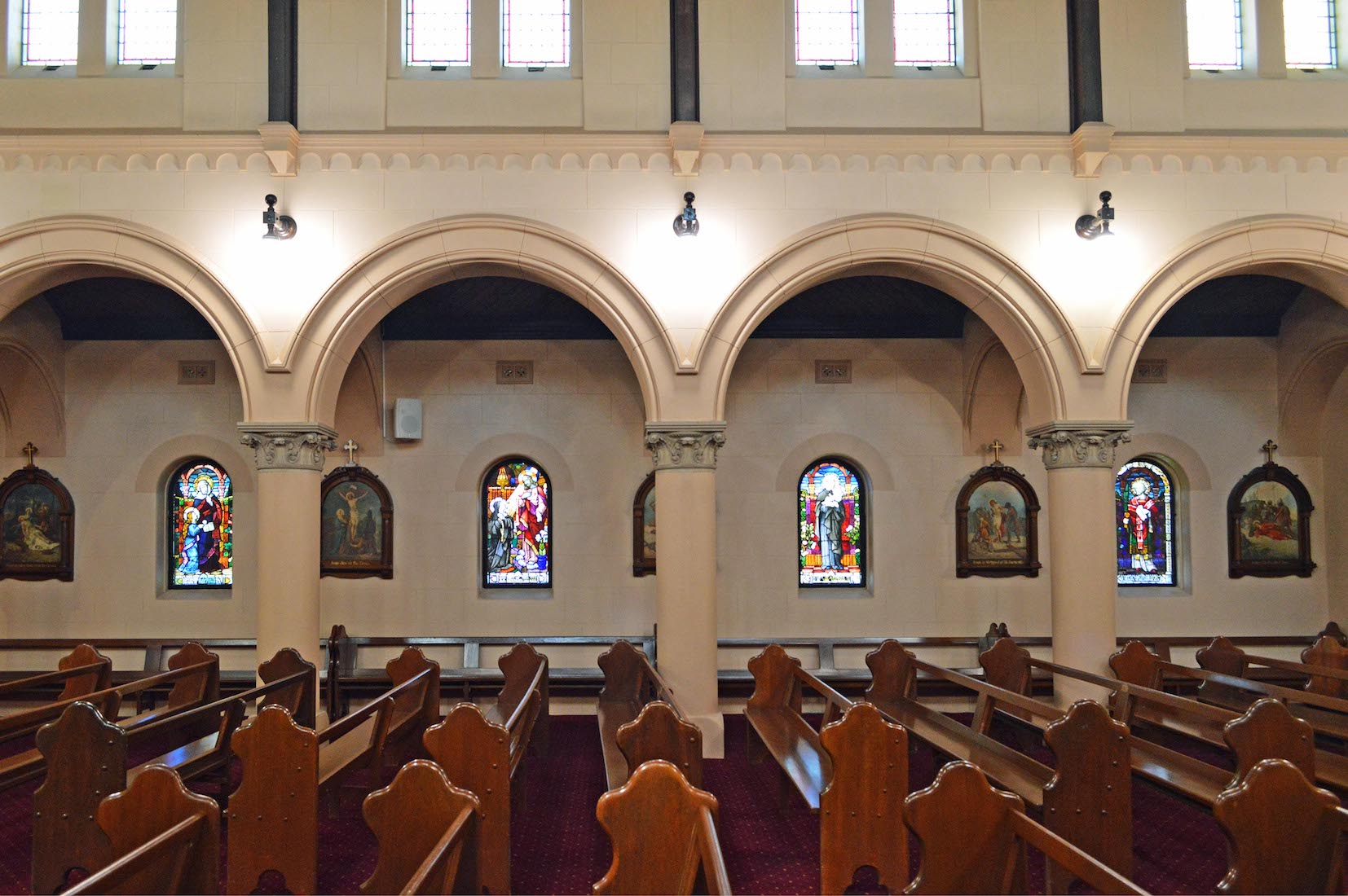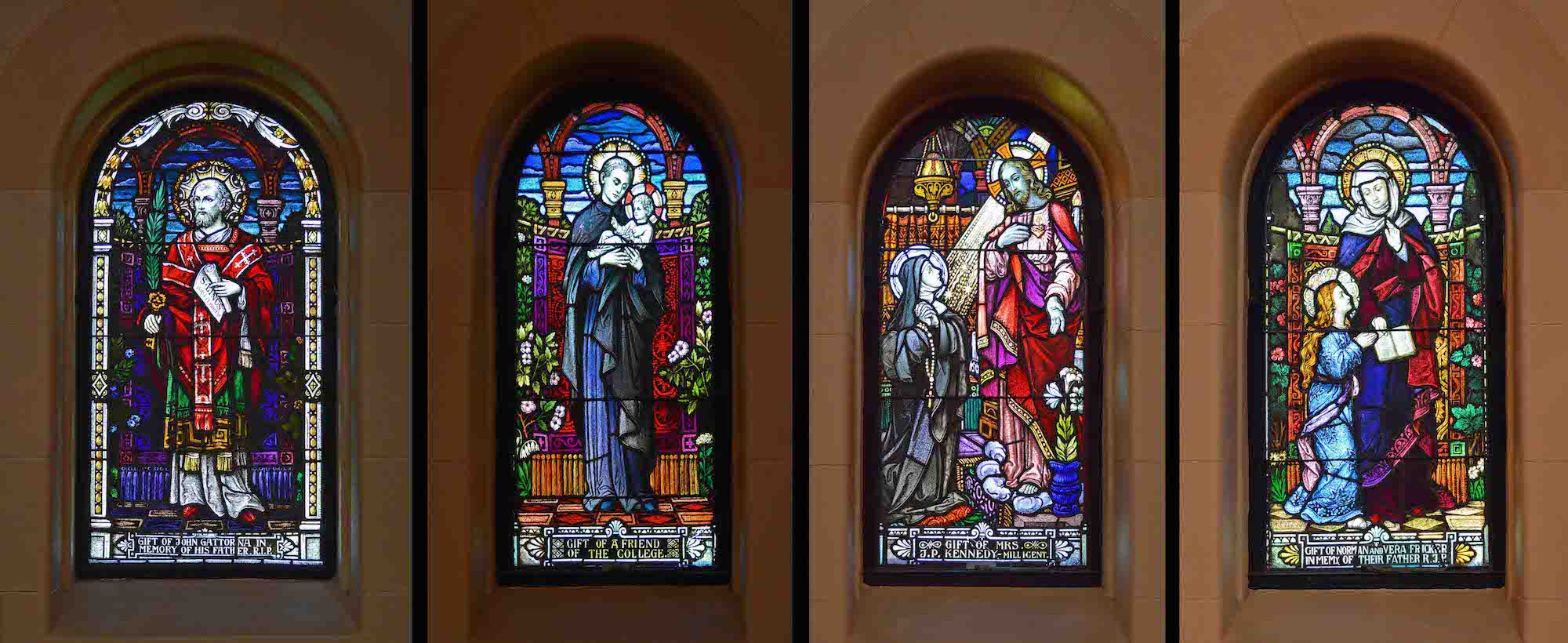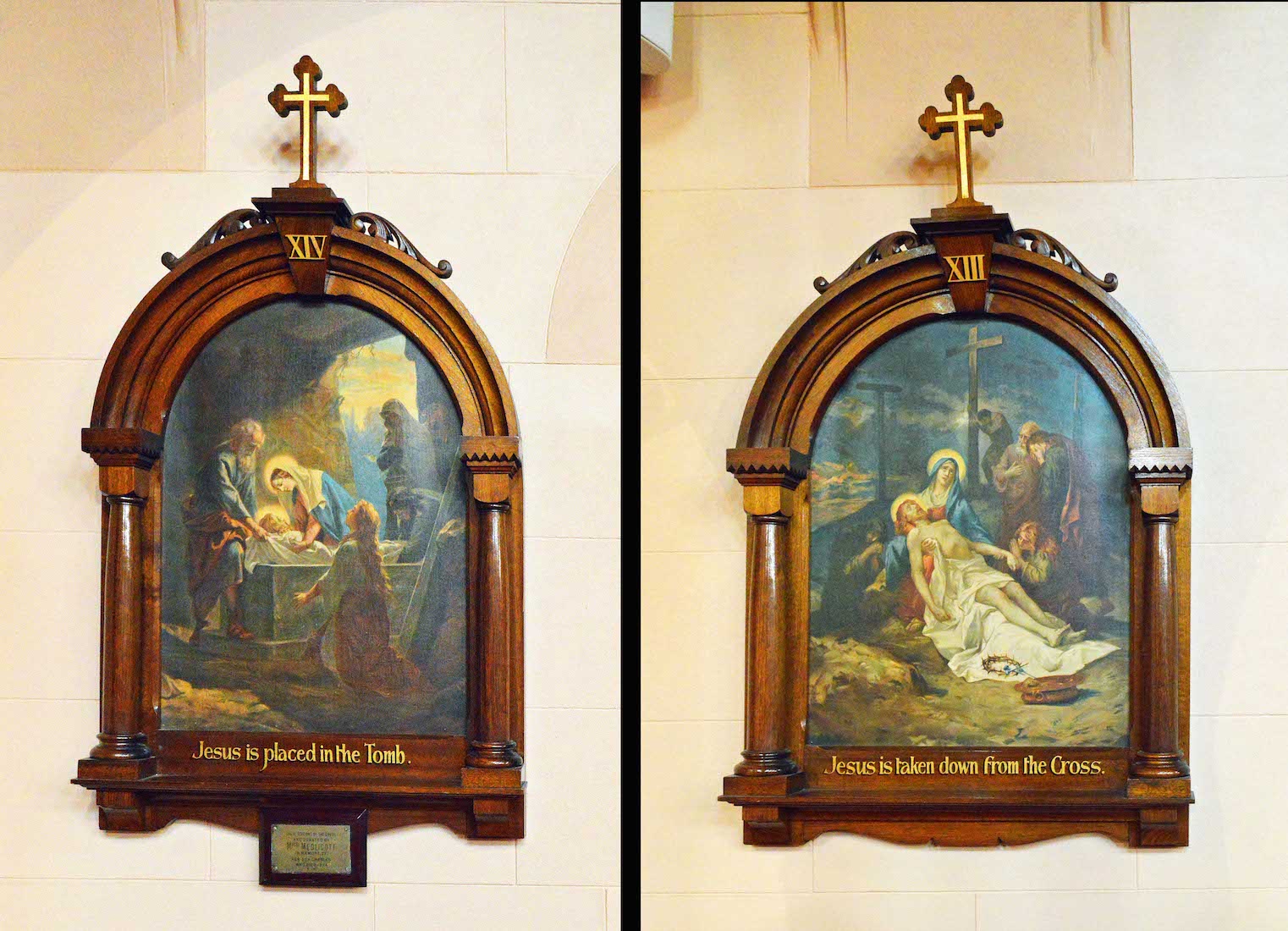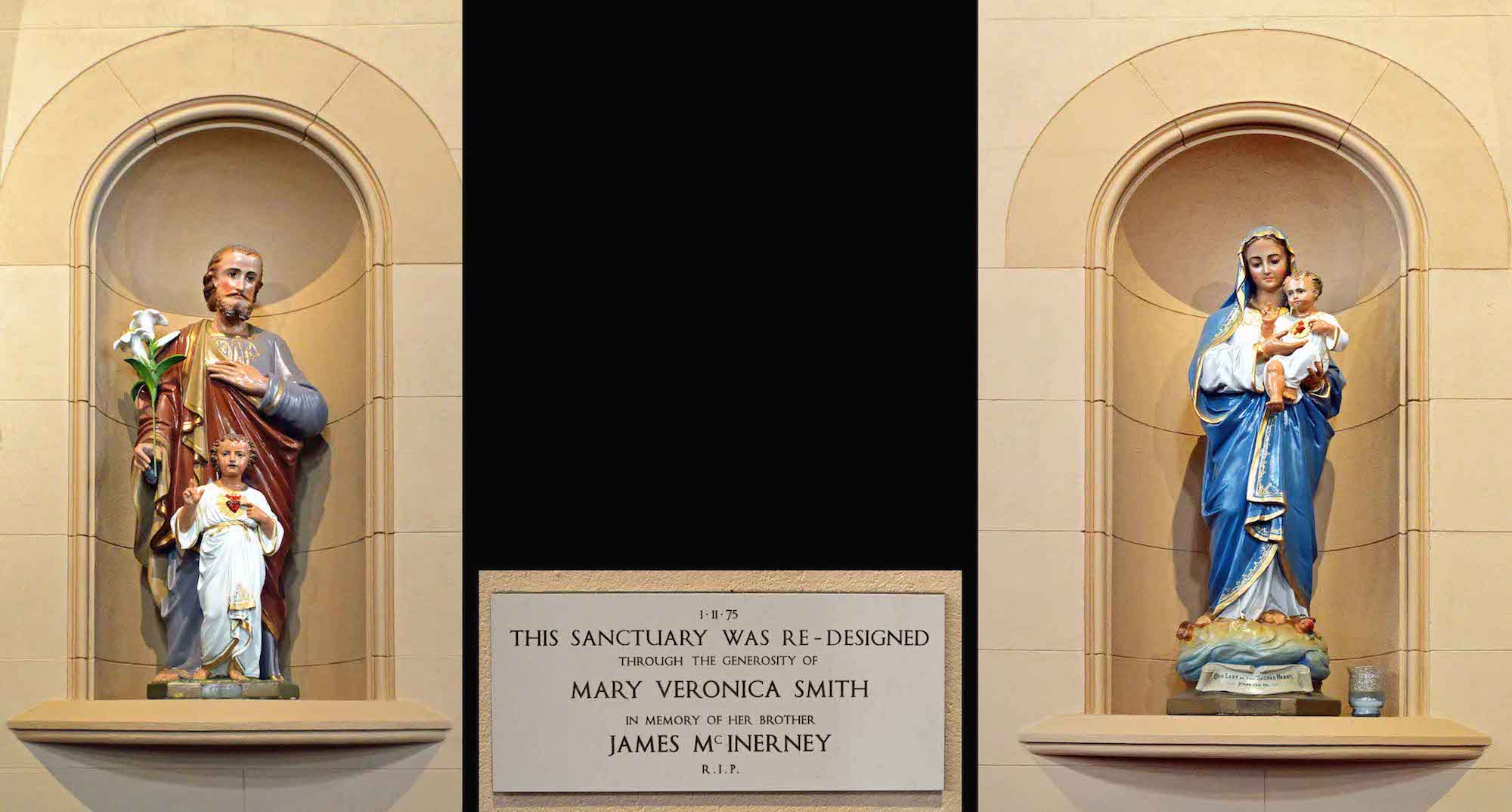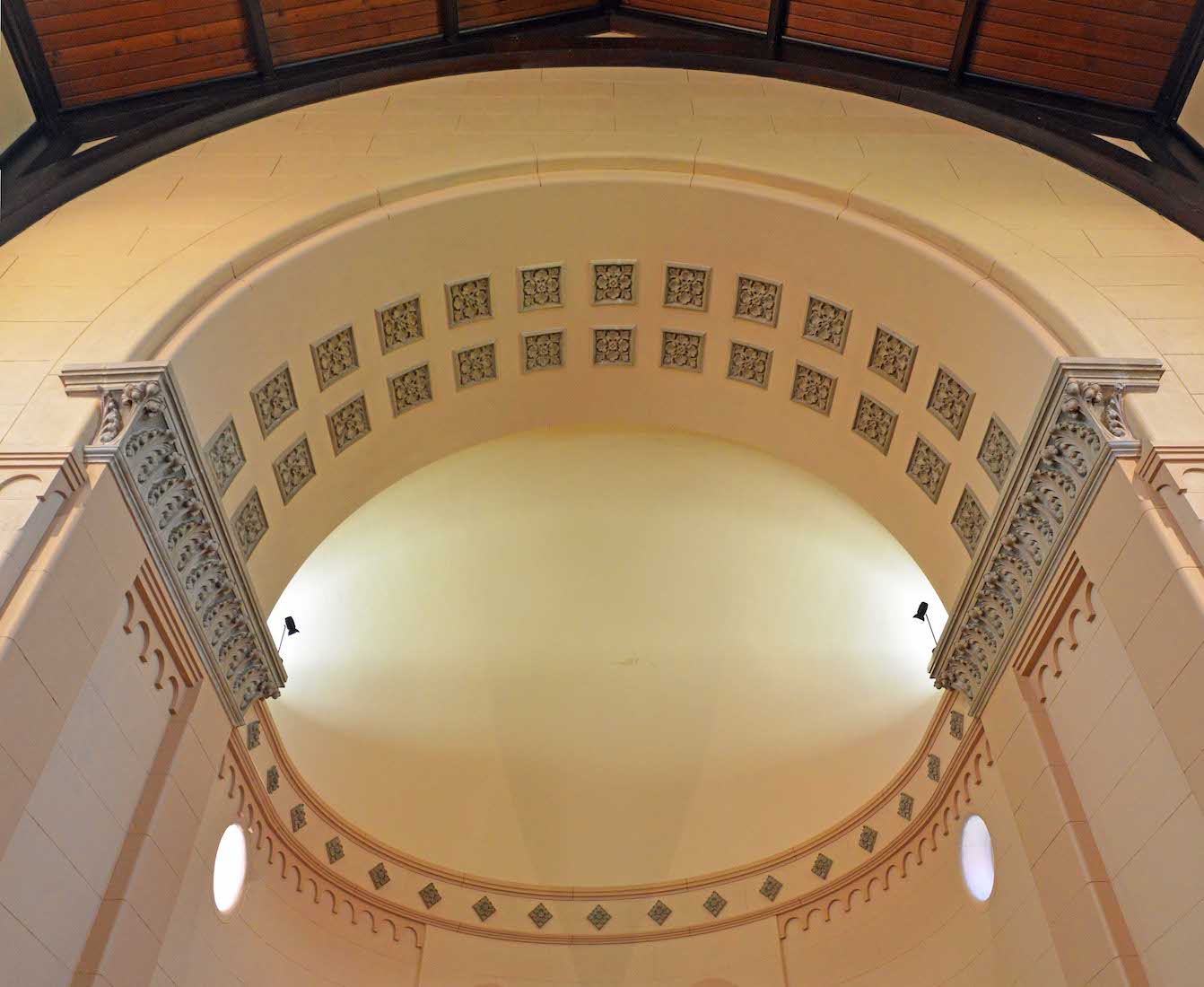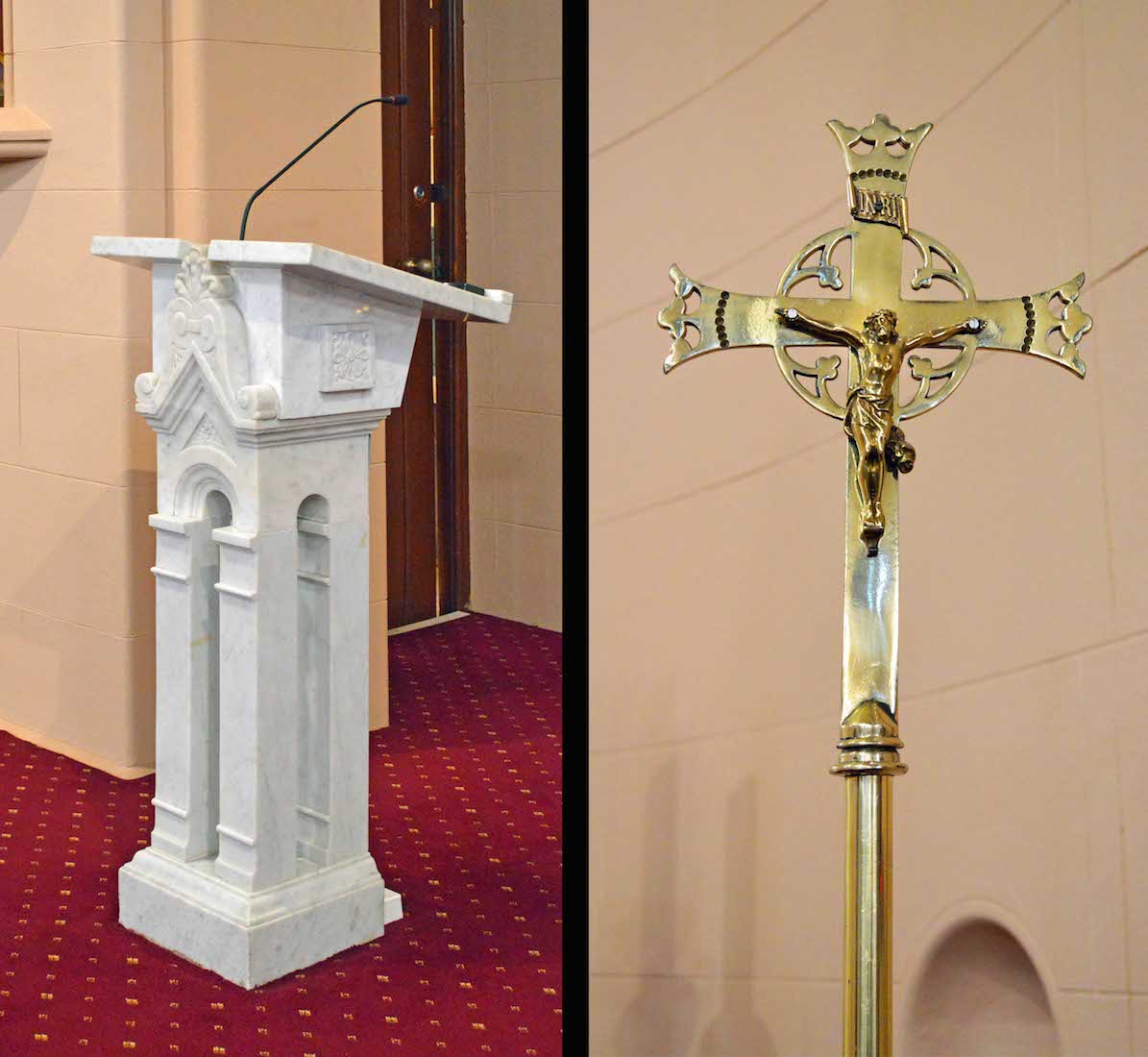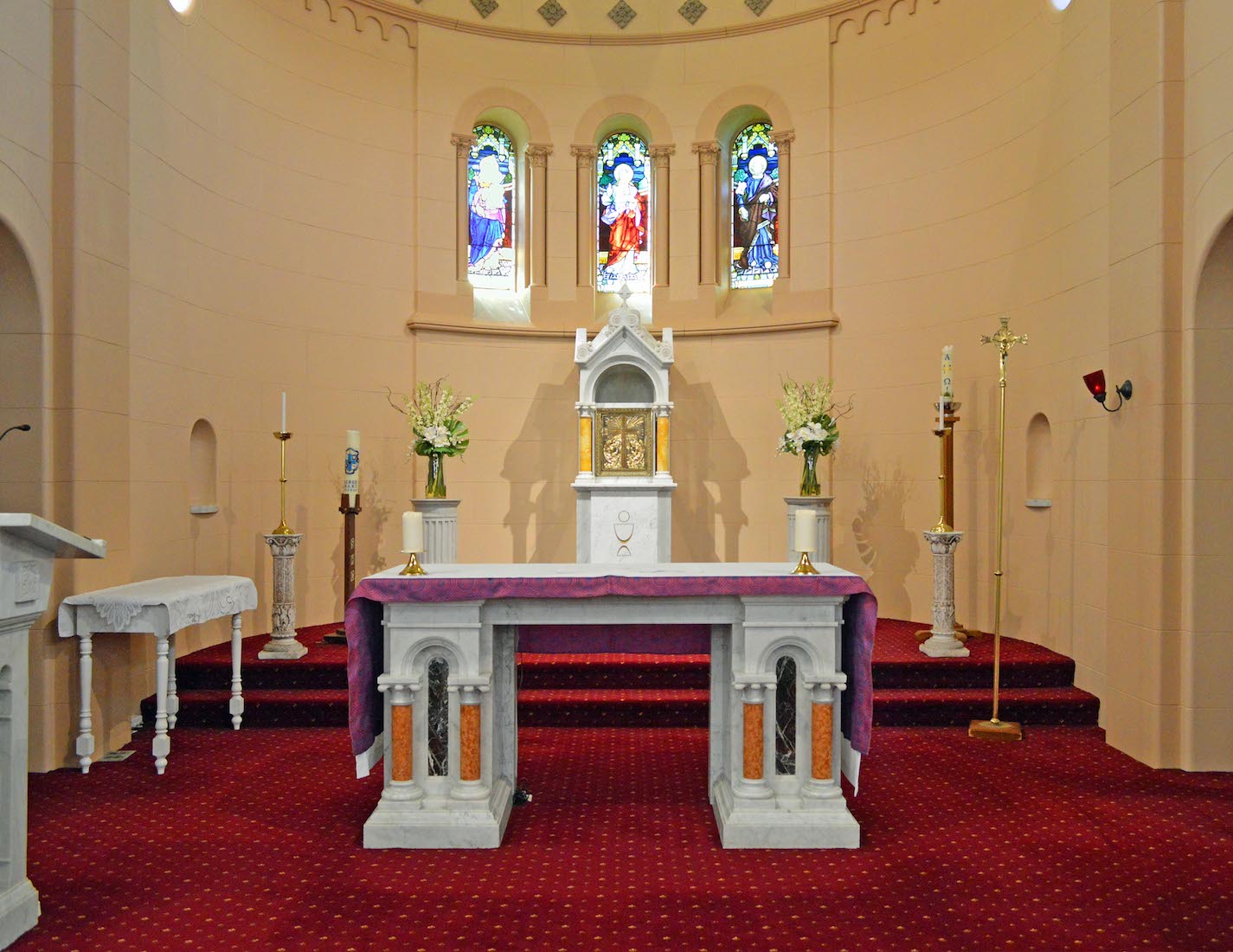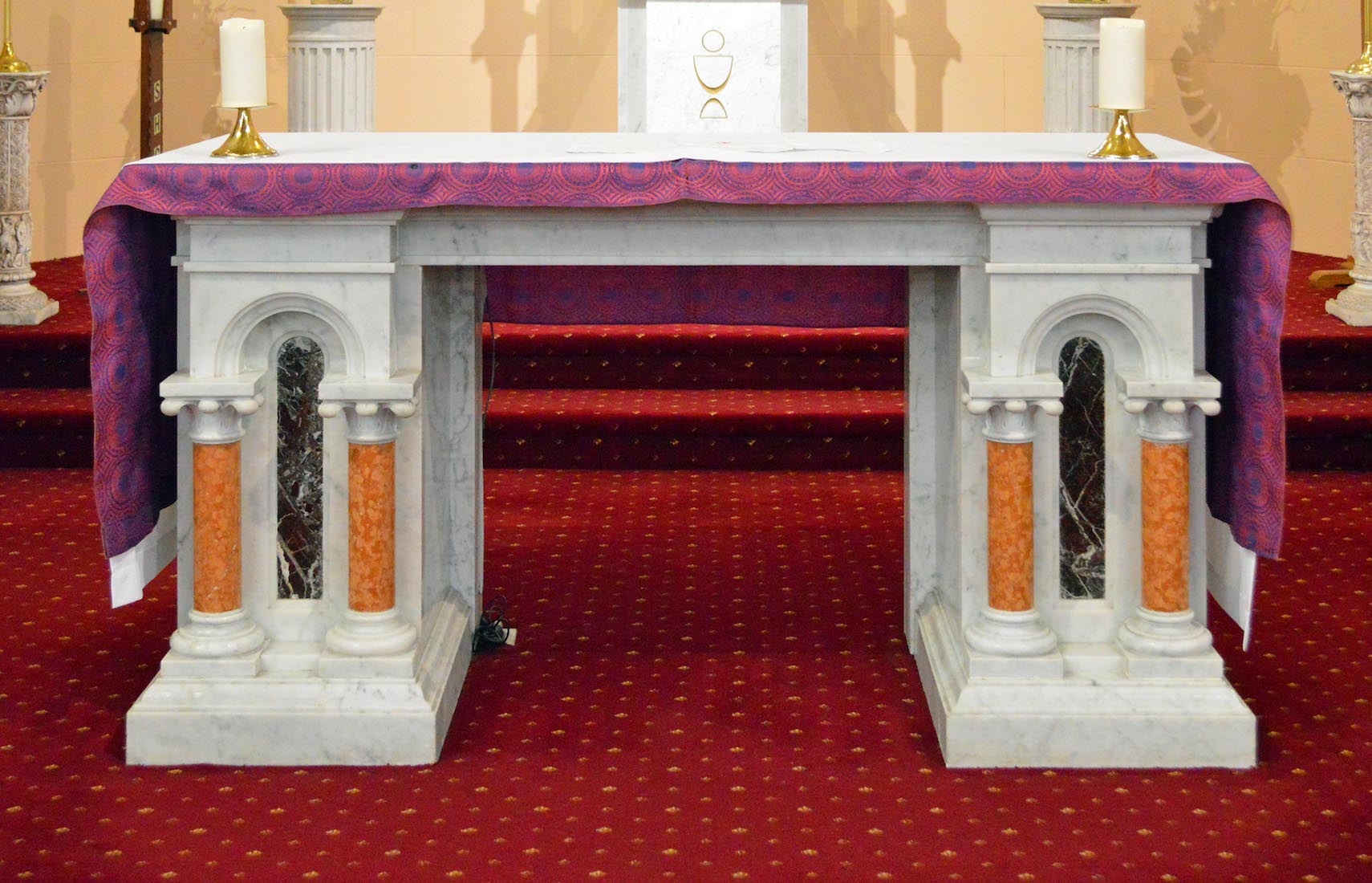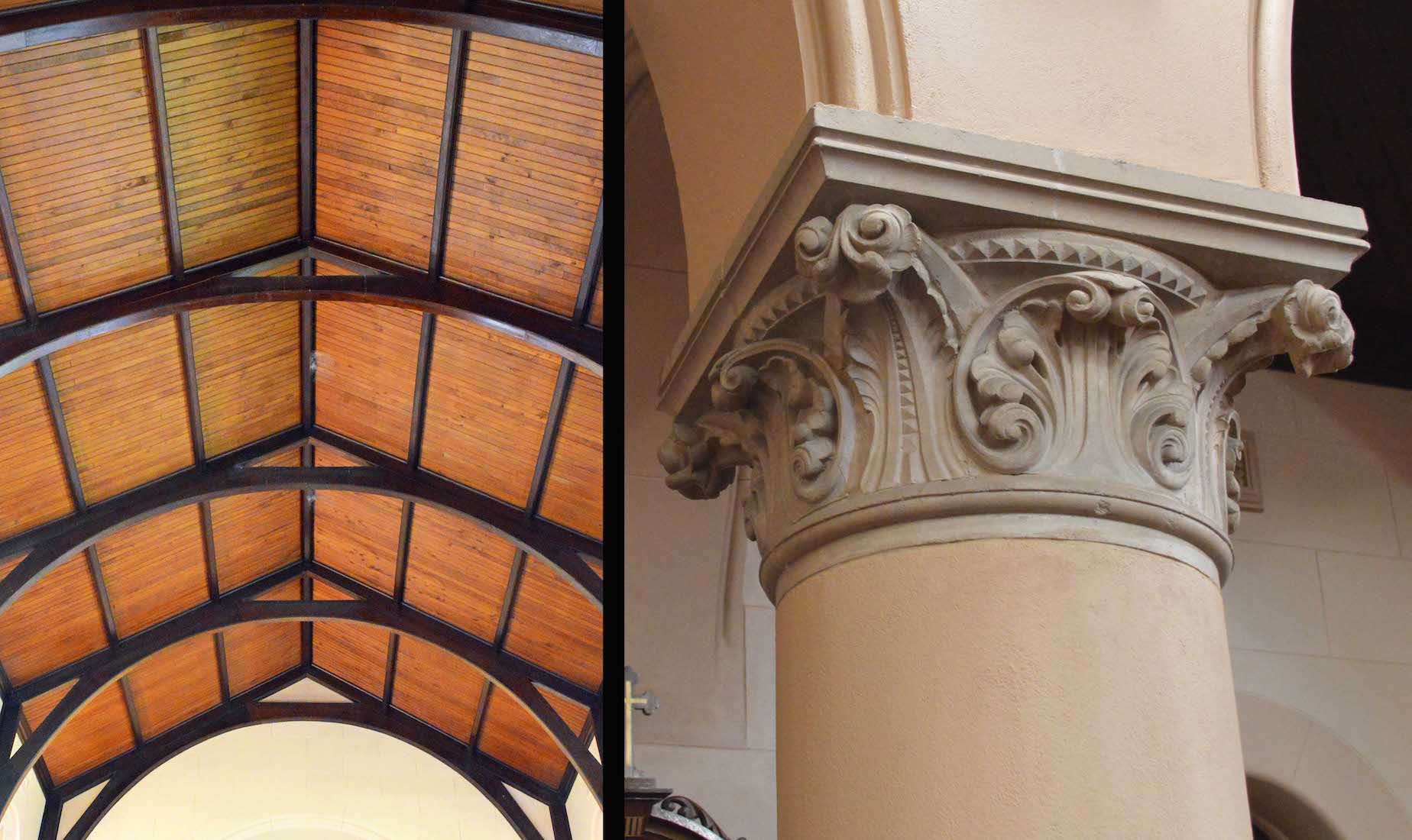
The nave roof is a simple gable lined with light-coloured boards. There are no cross beams for support, but the theme of circular arcs is apparent. We note too here the fancy carving on the column capitals. INDEX
22. WEST NAVE
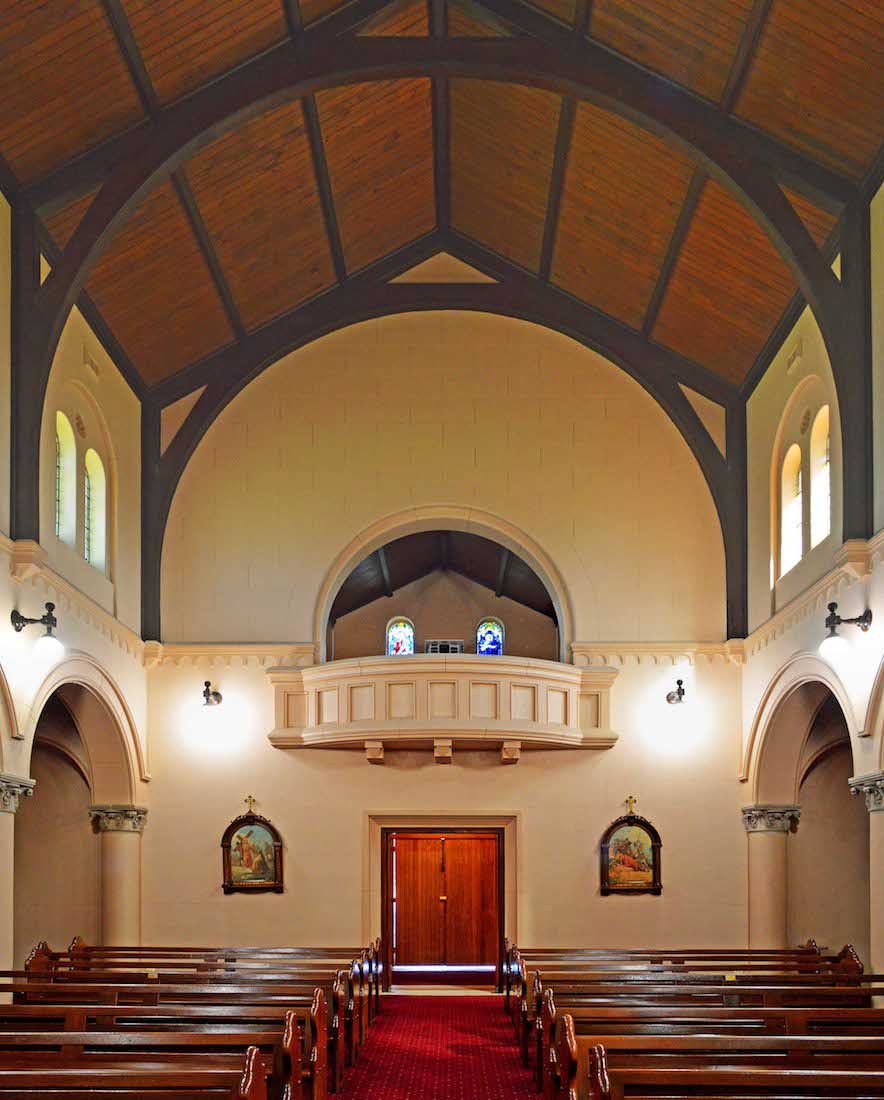
The simplicity of the Chapel decoration is seen again on the West wall. There is a gallery above the entry doors, and a Station of the Cross on either side.
23. GALLERY
Unfortunately I was unable to gain access to the gallery, but we see here the two stained glass windows which were evident from outside. The windows show two of the Four Evangelists: St Luke and St John.
24. STATIONS OF THE CROSS, VII AND VIII
The fourteen Stations of the Cross are displayed around the nave walls. These picture the final events in the life of Christ, and are designed to be an aid to devotion for Christians, particularly at Easter time. These Stations are traditional paintings in ornate wooden frames with the number at the top, and a brief description below. Pictured here are: VII Jesus falls the second time; and: VIII Jesus speaks to the Daughters of Jerusalem.
26. NORTH NAVE WINDOWS
From the left are depicted: • The call of Joan of Arc to save France and be pure [Gift of Briea Molony and Family]; • St Francis of Assisi [Dr R. McMahon Glynn]; • St Vincent de Paul [In memory of Thomas and Delia Davore]; • St Anthony of Padua holding the baby Jesus [Old Scholars’ Association in memory of Brother Joseph].
27. NORTH EAST NAVE
Beyond the windows at the Northeast end of the nave is a window-sized niche holding a statue of the Sacred Heart.
28. SACRED HEART
The Sacred Heart is often depicted in Christian art as a flaming heart shining with divine light, pierced by the lance-wound, encircled by the crown of thorns, surmounted by a cross, and bleeding. However, there are many variations. Sometimes the image is shown shining within the bosom of Christ with his wounded hands pointing at the heart, as here. The wounds and crown of thorns allude to the manner of Jesus’ death, while the fire represents the transformative power of divine love.
29. CHAPEL ORGAN
A small organ at the end of the North nave aisle provides music. The Chapel is used for College services, but is also a popular venue for weddings.
30. ACROSS TO THE SOUTH NAVE
We now look across the nave to the South side, and see another statue, dressed in black. This is Saint Marcellin Joseph Benedict Champagnat, founder of the Marist Brothers, a religious congregation of brothers in the Roman Catholic Church devoted to Mary and dedicated to education.
31. ST MARCELLIN CHAMPAGNAT
Marcellin Champagnat (1789 – 1840) was born in Le Rosey near St. Etienne (Loire), France. He was ordained as a priest in 1816, and was part of a group led by Jean-Claude Colin, who founded the Society of Mary, a separate religious congregation to the Marist Brothers teaching order which Marcellin founded later. Marcellin was born in the year of the storming of the Bastille, the start of the French Revolution. The religious, political, economic and social unrest of the times he lived in influenced his priorities and life path.
32. SOUTH NAVE
The layout of the South wall of the nave is a reflection of the North wall. There are Stations of the Cross and another four beautiful windows.
33. SOUTH NAVE WINDOWS
From the left these windows depict: • St Linus, second bishop of Rome, and second pope [Gift of John Gattorna]; • St Stanislaus Kostka [Friend of the College]; • The Sacred Heart appearing to St Margaret Mary Alocoque [Mrs J. P. Kennedy]; • St Anne and her daughter St Mary [Norman and Vera Fricker].
34. TWO MORE STATIONS OF THE CROSS
The final two Stations of the Cross are: XIII Jesus is taken down from the Cross; and: XIV Jesus is placed in the Tomb. A small plaque tells us that the Station on the left here was given by Mrs Medlicott in memory of her son Charles.
36. THE HOLY FAMILY
To the left is a statue of Joseph and the boy Jesus. Joseph is identified by the flowering sprig he carries, in accordance with an old legend. At right is Mary holding the baby Jesus. The plaque shown at centre appears below the right statue. The statues of St Joseph and Our Lady were presented by Mrs F.B. Keogh in memory of her son Kevin Aloysius.
37. UPPER APSE
The apse roof has a simple decorated style which is attractive. There is a recurrence of the rounded arches around the lower border, and the frieze work on either side bears a strong resemblance to the decoration of the column capitals.
38. AMBO AND PROCESSIONAL CRUCIFIX
It is not uncommon in Catholic churches for the traditional pulpit and lectern to be combined in the ‘ambo’ as shown at left. It is a sensible combination in a small chapel. The processional crucifix is used to lead processions of clergy during services. The processional crucifix was presented my Mr J. Honner of Maitland in memory of his mother.
39. CENTRAL SANCTUARY
As we approach more closely to the altar, we notice various other items. At left is a credence table – a small table used for standing vessels used in the Eucharist. The flowers make an attractive display. And at right is a sanctuary light which indicates that reserved Elements of the Eucharist are present in the tabernacle.
40. ALTAR
The altar is the focus of services held in the Chapel. It is from here that the Eucharist is administered.


